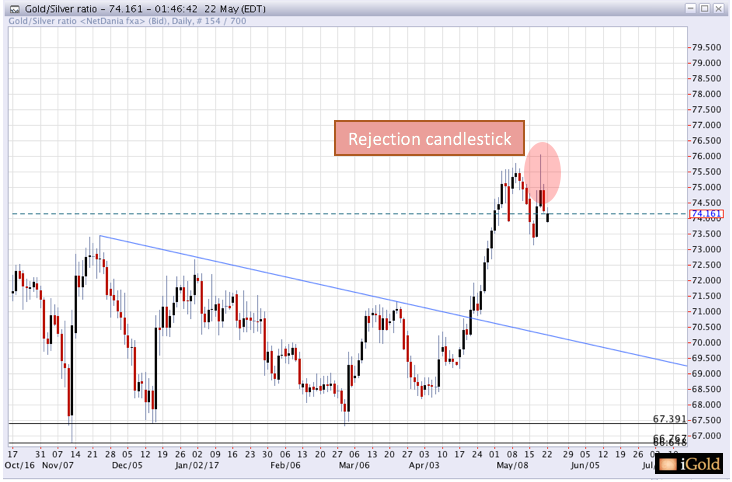Gold Breaks $1,300 But Silver Lags

Gold has finally broken out of a simple yet powerful technical boundary – the declining linear trendline which defined the 2011 – 2017 period in precious metals prices. The ramifications for this breakout are significant and we expect higher gold prices are in store for the next year at minimum.
Click here to continue reading for FREE on our partner site, Gold Eagle…
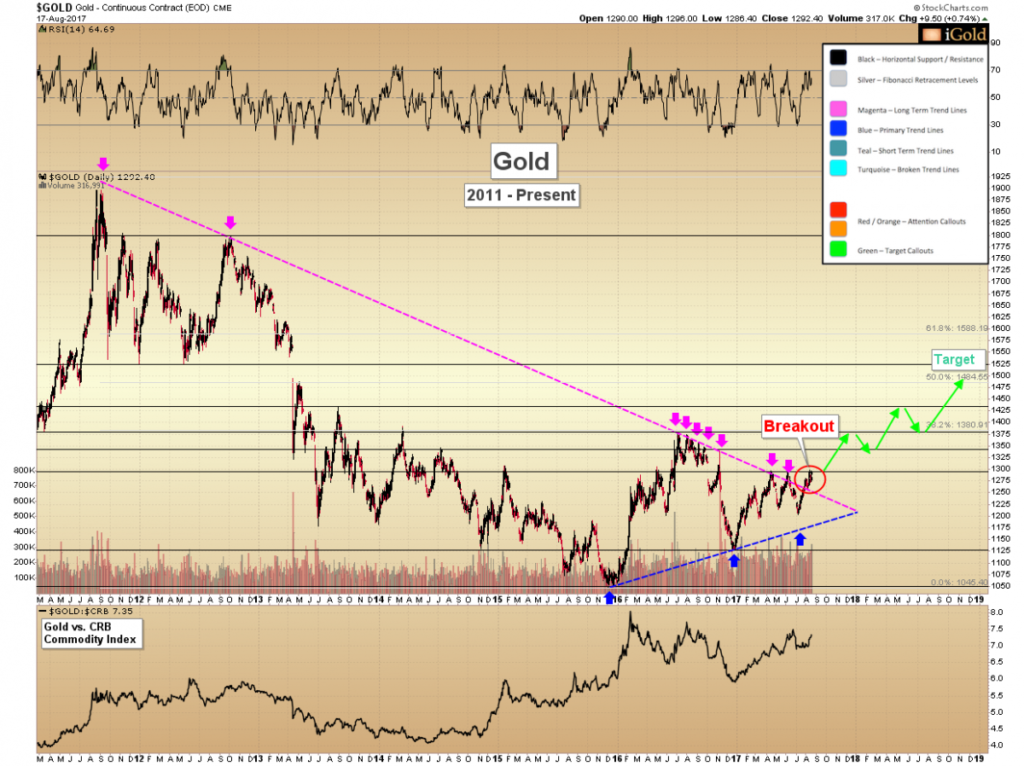
Since gold’s all-time high of $1,923 per ounce in September 2011, the nearly 6-year decline that this week has brought prices back to $1,270 has been broadly defined by a falling linear trend of selling pressure. This declining trend is being tested immediately, and a breakout higher would be a major signal that gold’s period of falling prices has come to an end. However, caution is warranted as leading indicators are still flashing warning signals for precious metals prices.
Click here to continue reading for FREE on our partner site, Gold Eagle…
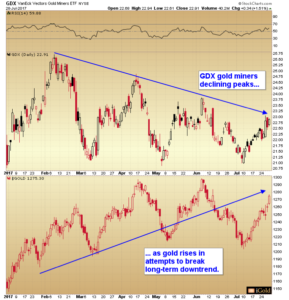
Unfortunately for gold, we are living through one of those anomalous time periods in which the US dollar and precious metals are positively correlated – but to the downside.
Throughout history, gold tends to have its strongest moves when the US dollar is losing value, as gold receives bids from those looking to protect their savings against a decline in the world’s reserve currency.
However, as we can see at right, especially since the Federal Reserve meeting in mid-June, both the US dollar and gold have moved in the same direction: lower.
Click here to continue reading for FREE on our partner site, Gold Eagle…
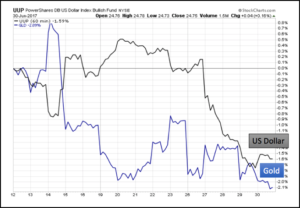
On the heels of the Federal Reserve’s most recent ¼ point interest rate hike on Wednesday, gold and the precious metals complex have seen a negative bearish reversal that deserves caution over the short and intermediate term.
Fundamentally, the interest rate hike and accompanying policy statement, which indicated that the Fed would begin to taper down its balance sheet over the coming year, was interpreted by the market as supportive for the US dollar and negative for gold. As precious metals investors, we know that the Fed has already printed nearly $4 trillion dollar of fresh liquidity in support of the financial system over the past decade, and that the feasibility of the central bank reducing this liquidity by any significant amount is doubtful. Yet what is important over the short run is not so much our fundamental beliefs – but rather how the market itself is reacting.
For example, those who ignored the actual response of the gold market in 2011 suffered severe losses as the precious metals declined through late 2015. All the while, the Fed continued to print money. The market can move contrary to perceived fundamentals for many years. Caution is again advised at this juncture.
Click HERE to continue reading the full article for FREE on our partner site, Gold Eagle…
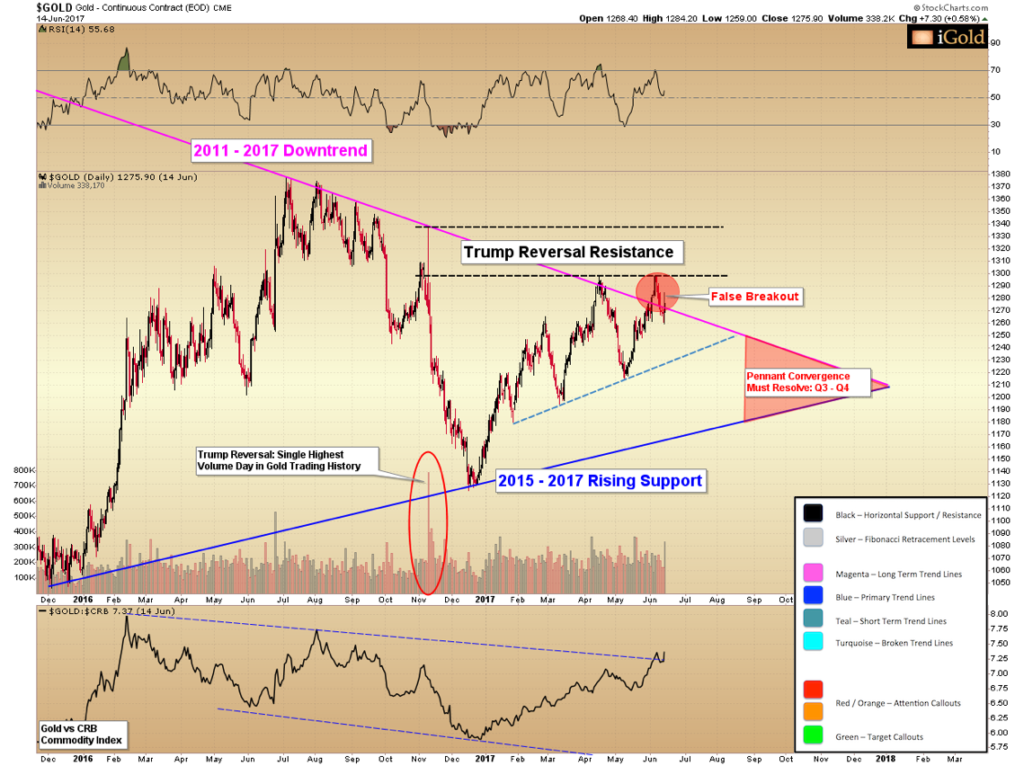
https://www.youtube.com/watch?v=FcUes0fLtmg
US stocks are overvalued by several major valuation models, but is a top near?
Click here to continue reading the full article for FREE on our partner site, Gold Eagle…
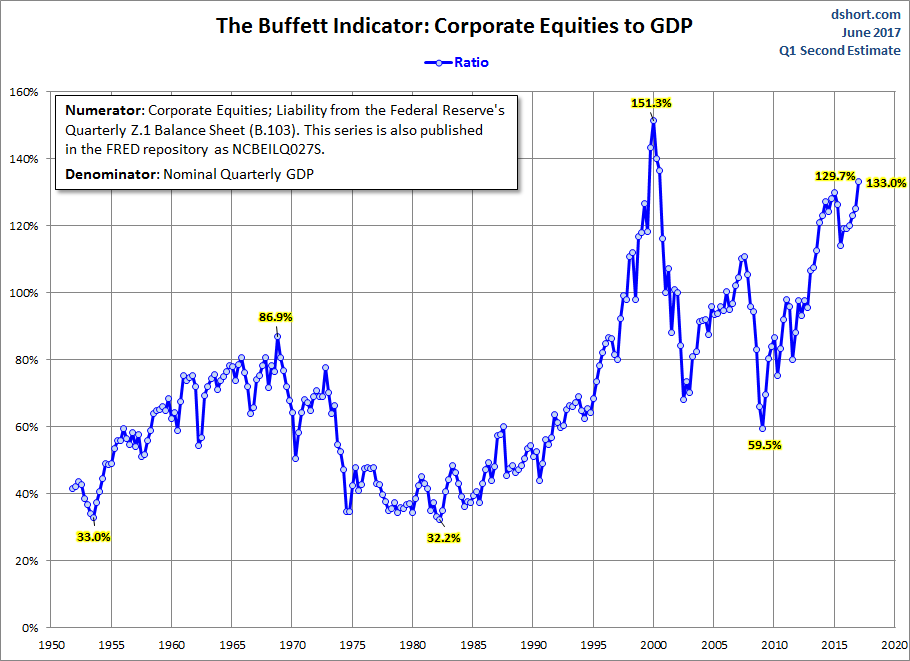
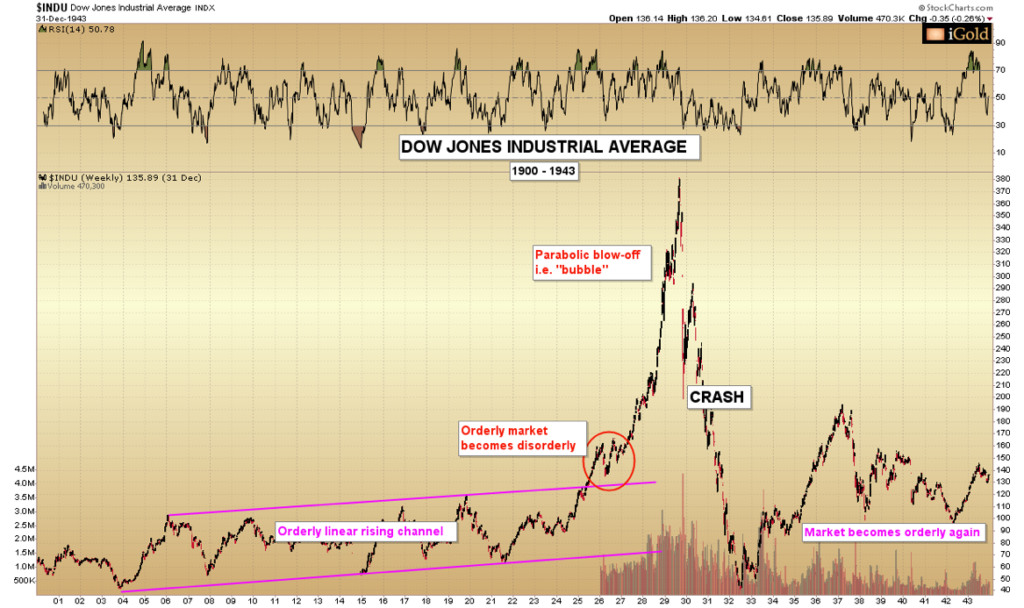
Christopher Aaron discusses the state of the gold market with Future Money Trends.
Gold prices remain in a mid-cycle consolidation after the strong advance seen in first-half 2016. Seasonal influences are shaping up for strength by August and September. The gold to silver ratio looks to have topped, signifying an important low across the sector. Precious metals investors should continue to monitor the ratio as a leading indicator, which will give us hints as to the direction of gold’s pending breakout when it occurs later this year.
Click HERE to continue reading the full article for FREE on our partner site, Gold Eagle…
